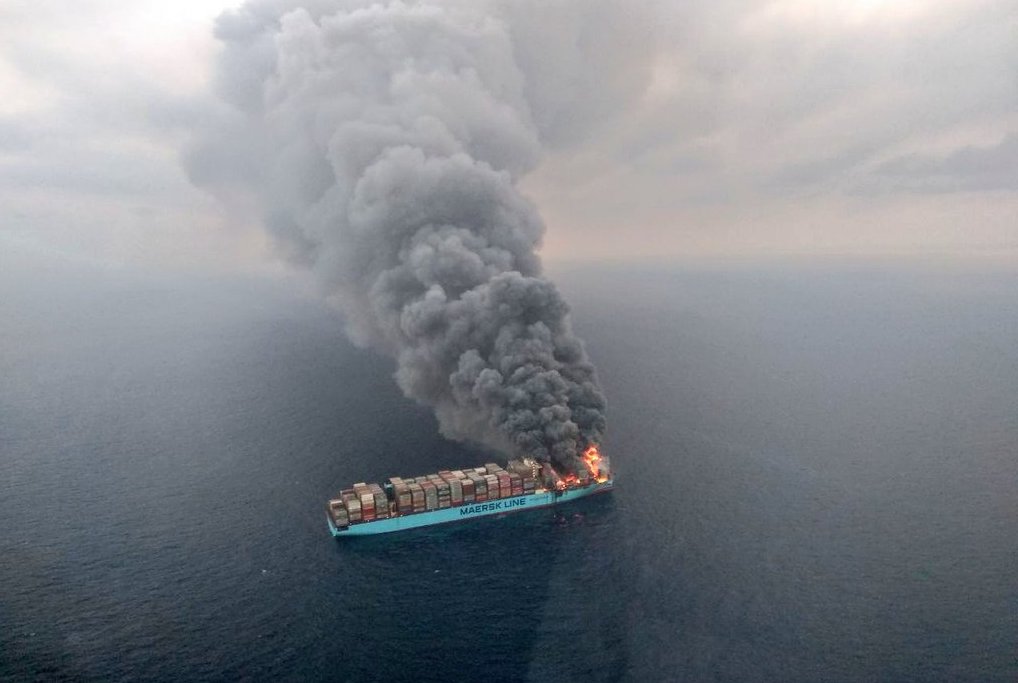
Each year, more than 100 million containers are shipped across the globe on containerships that can now stretch the length of three soccer fields or more. Despite the large number of containers shipped, accidents are relatively rare, with the best estimates saying that less than 1,500 containers are lost from ships each year on average.
Hanjin Pennsylvania – Indian Ocean, 2002
The Hanjin Pennsylvania was less than a year out of the shipyard when an explosion occurred in a cargo hold on November 11, 2002, off Sri Lanka during a voyage from Singapore to Germany.
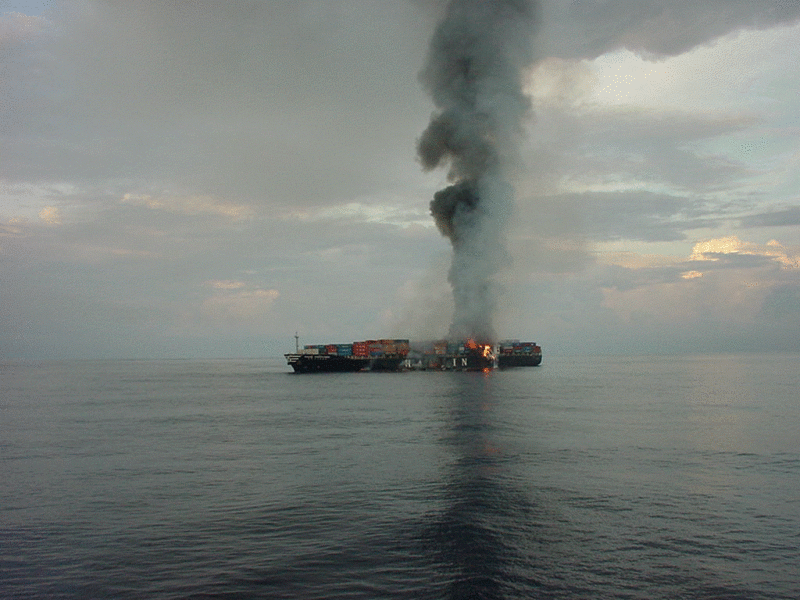
Four days after the initial blast, a second explosion rocked the 282-meter vessel. It’s source? One or more containers filled with fireworks that were misdeclared on the ship’s manifest.
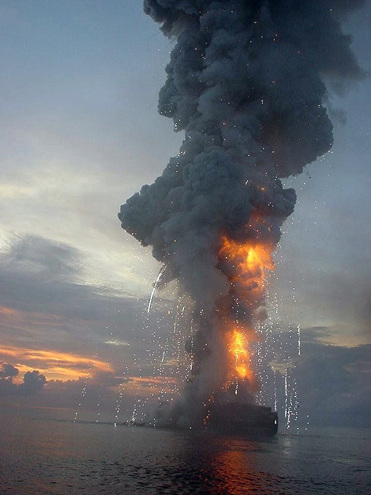
Tragically, two crew members were killed in the accident. As for the ship, she stayed afloat but was eventually declared a total loss and sold for scrap. She never made it to the breakers, however, and she was rebuilt and returned to service as the Norasia Bellatrix.
Hyundai Fortune – Gulf of Aden, 2006
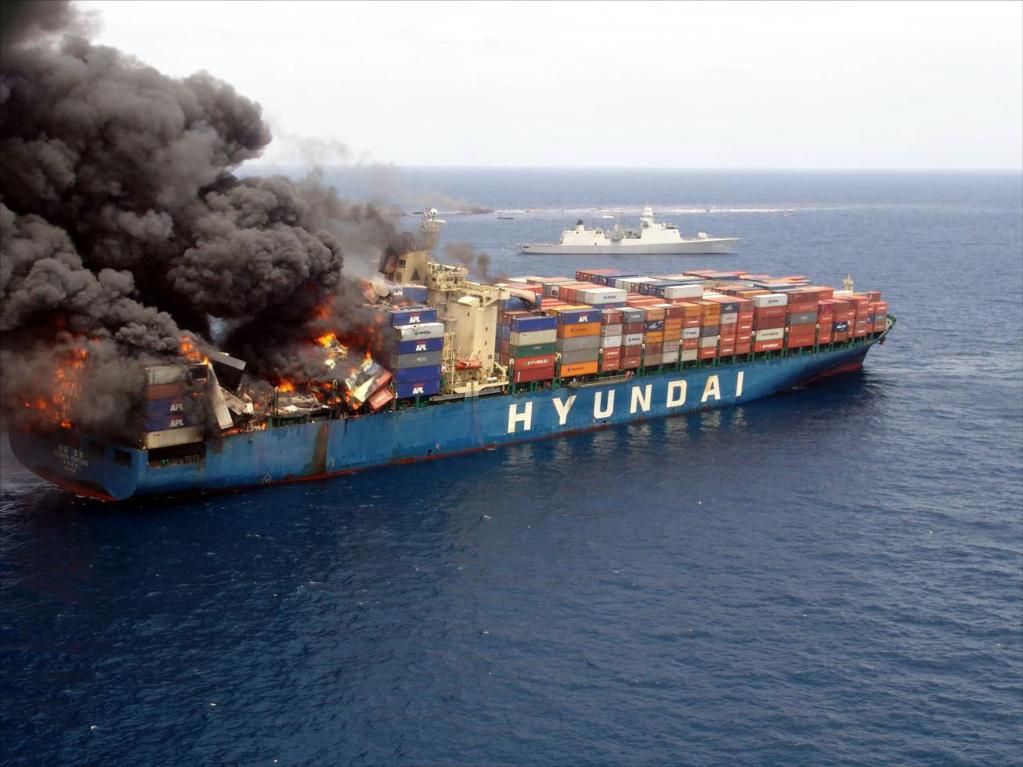
The 274-meter Hyundai Fortune was rocked by a powerful explosion while heading west in the Gulf of Aden on March 21, 2006. Dozens of containers were blown overboard in the blast, creating a debris field that was estimated to be five miles around the vessel. The resulting fire burned for several days.
All 27 crew members abandoned ship and were picked up by a destroyer with the Royal Netherlands Navy, with only one receiving non-life threatening injuries.
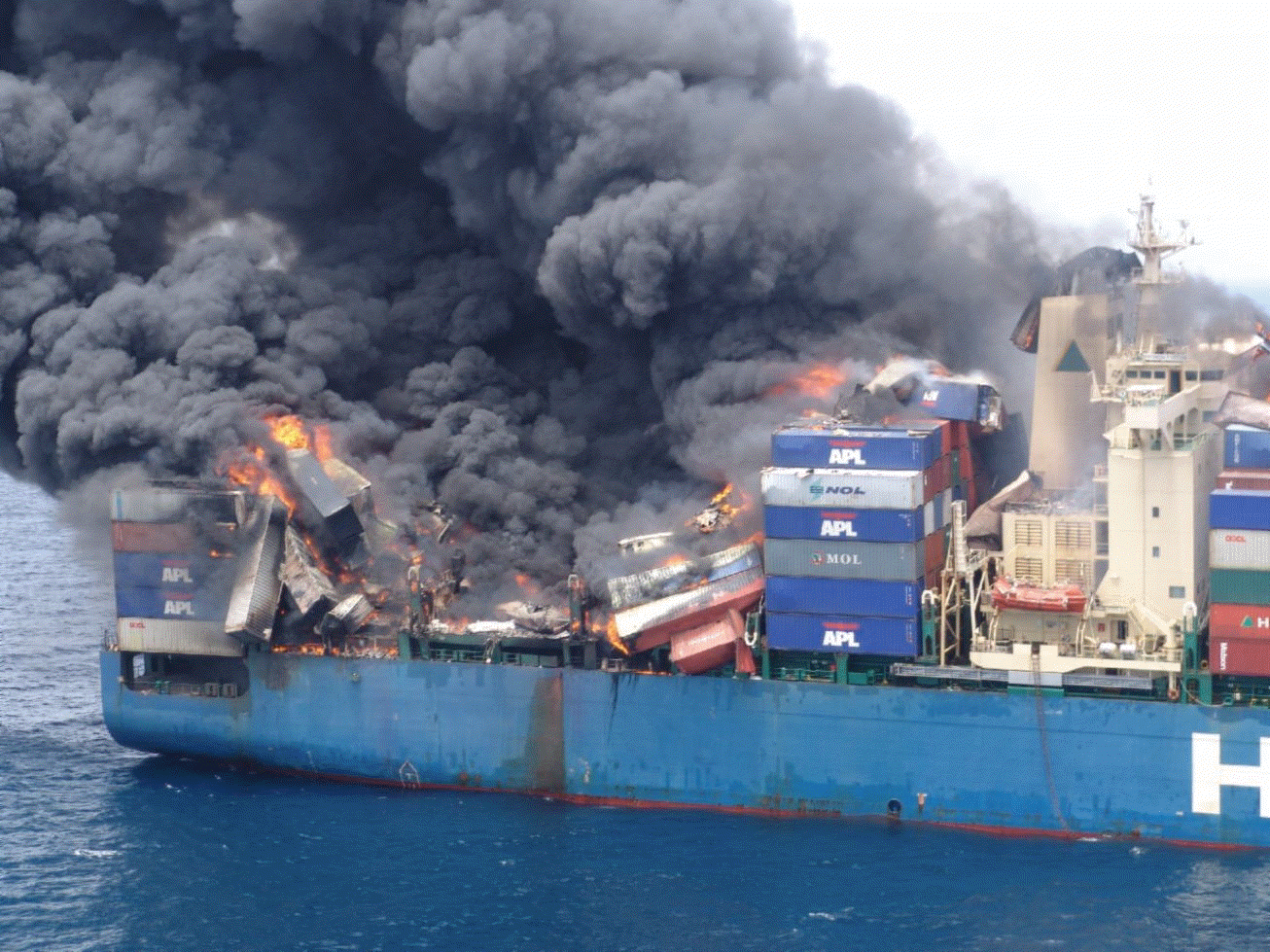
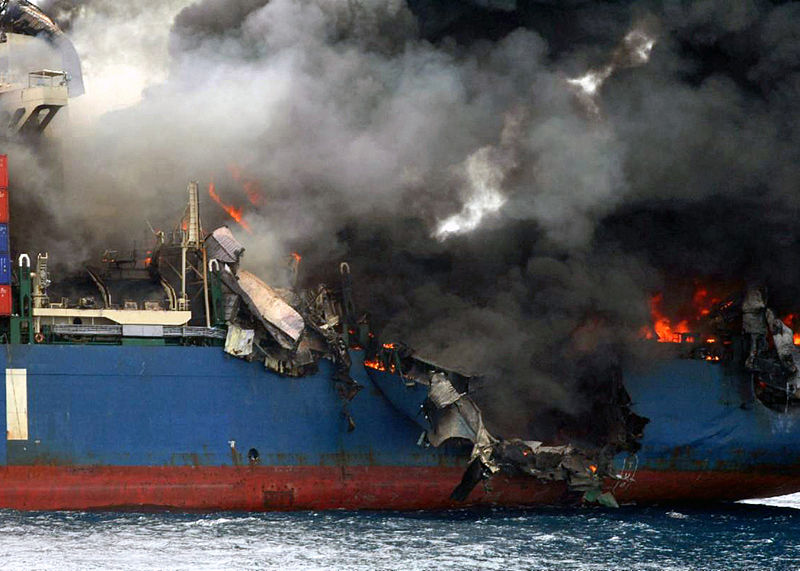
The vessel was eventually towed to Salalah, Oman where it was determined that approximately 1,000 of the 3,000 containers had been damaged in the fire. The exact cause of the initial explosion was never determined.
The vessel was later repaired and returned to service. She was scrapped in 2018.
MSC Napoli – English Channel, 2007
In January 2007, the 275-meter MSC Napoli developed a crack and flooding after experiencing heavy weather in the English Channel during a voyage from Belgium to Portugal.
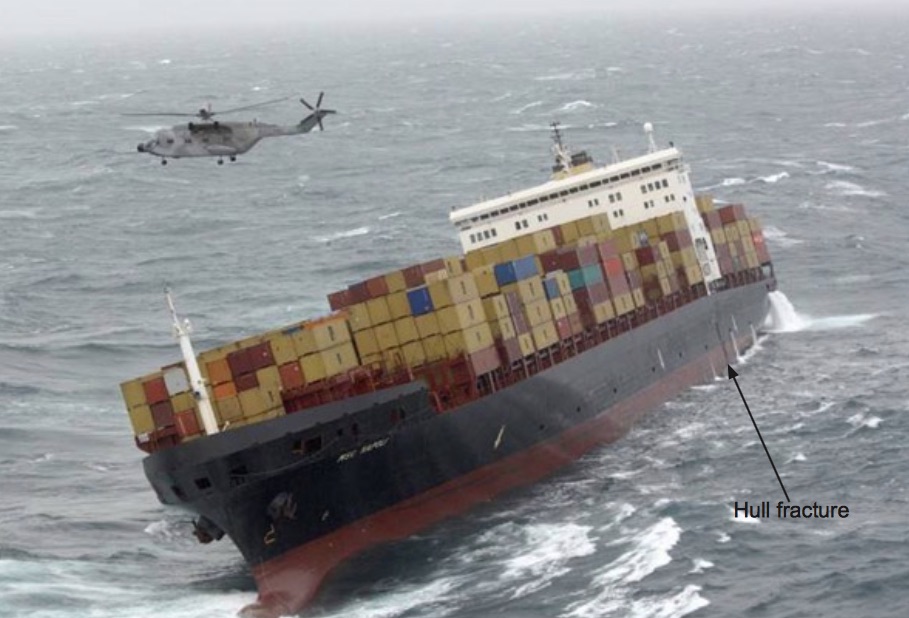
All 26 crew members successfully abandoned ship, leaving the Napoli adrift off Cornwall, England.
The vessel was eventually taken under tow, but officials feared that the ship could break up and sink so she was intentionally beached in Lyme Bay off the coast of Branscombe.
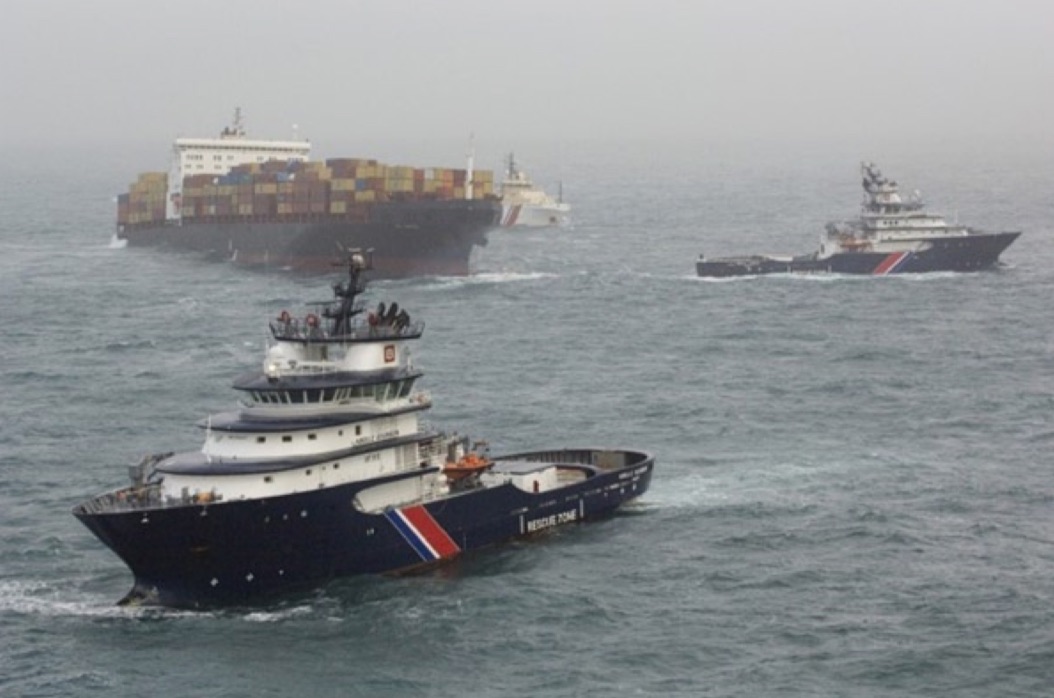
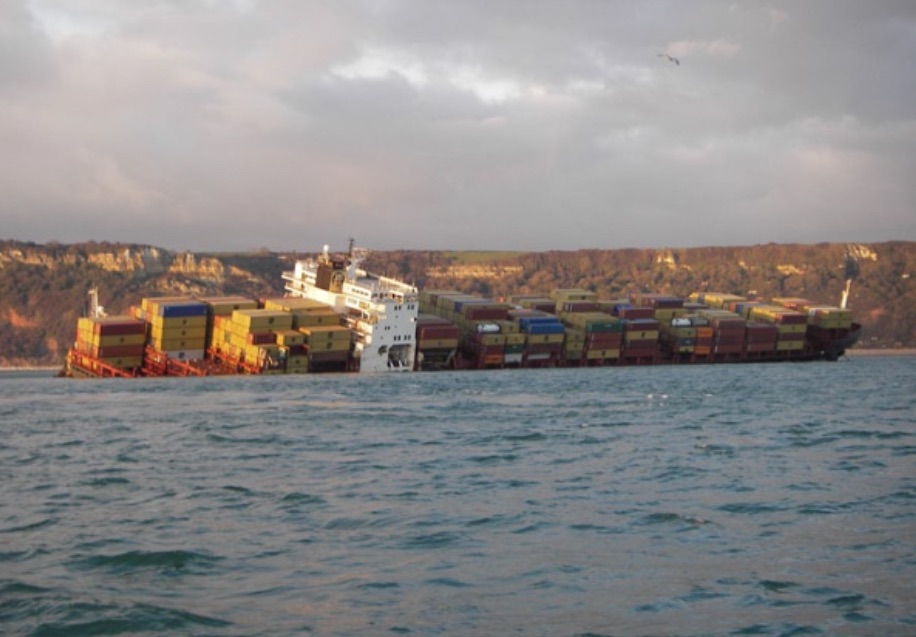
After removing fuel and cargo, salvage crews refloated the Napoli on July 9, but it was quickly determined that she was in too poor of state to tow and they opted to re-beach the vessel 3 days later. Salvors instead used explosives to break the wreck into three sections, which were later removed individually.
It has been said that from start to finish, the salvage of the MSC Napoli took a whopping 924 days to complete.
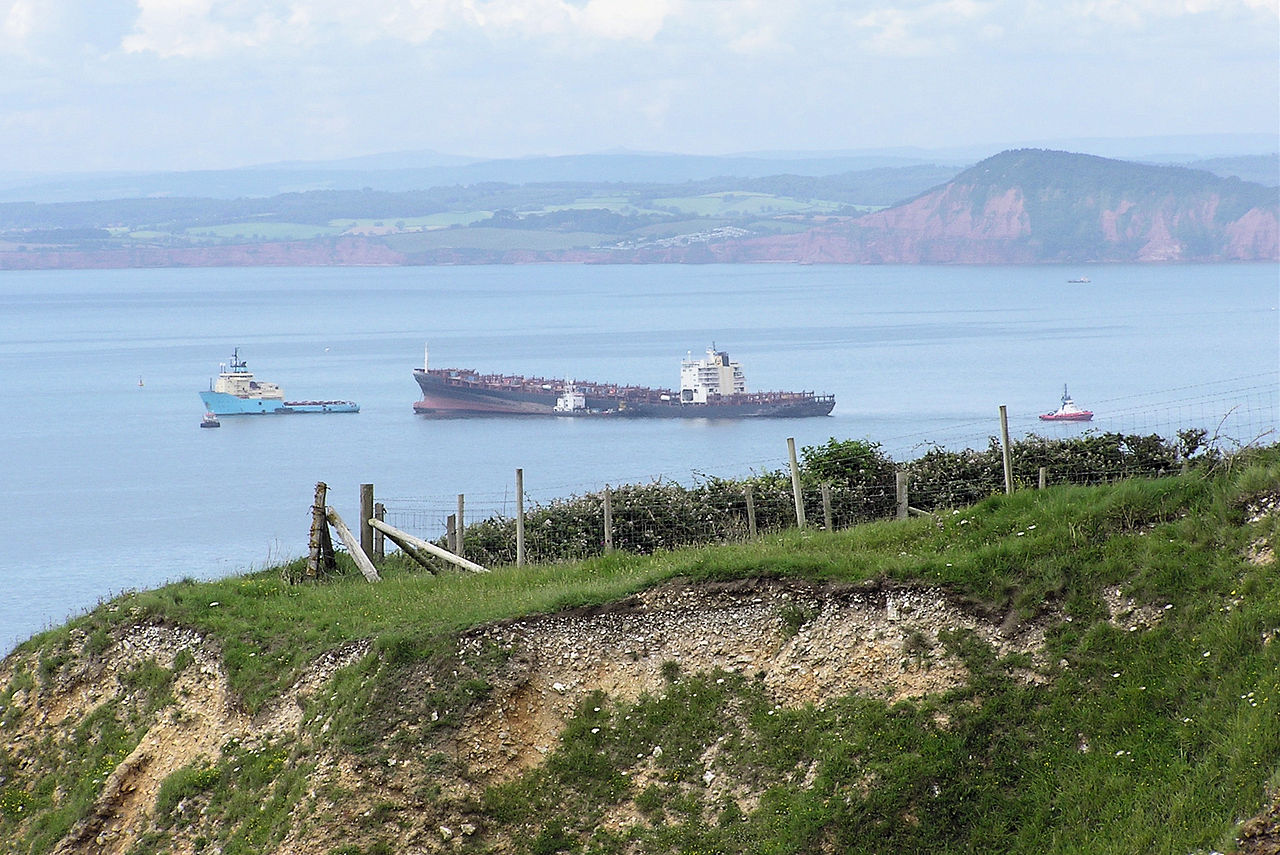
Rena – New Zealand, 2011
Early on October 5, 2011, the 224-meter containership Rena struck the Astrolabe Reef in New Zealand’s Bay of Plenty at a speed of about 17 knots as it sailed towards Tauranga.
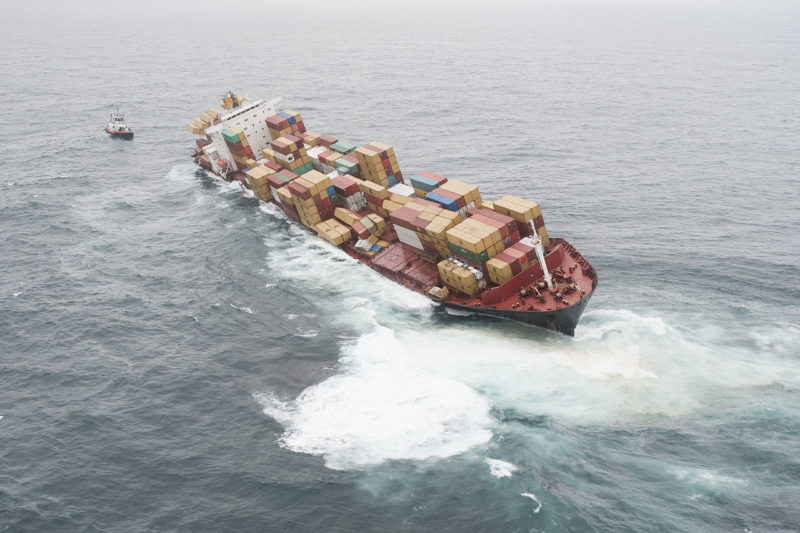
The ship spent the following months exposed to the elements and breaking up on the reef as salvors attempted to reduce the environmental impact as much as possible. Due to pounding surf, however, the Rena ended up splitting in two in January 2012, leaving salvors with the only one option – to dismantle the wreck right on the reef.
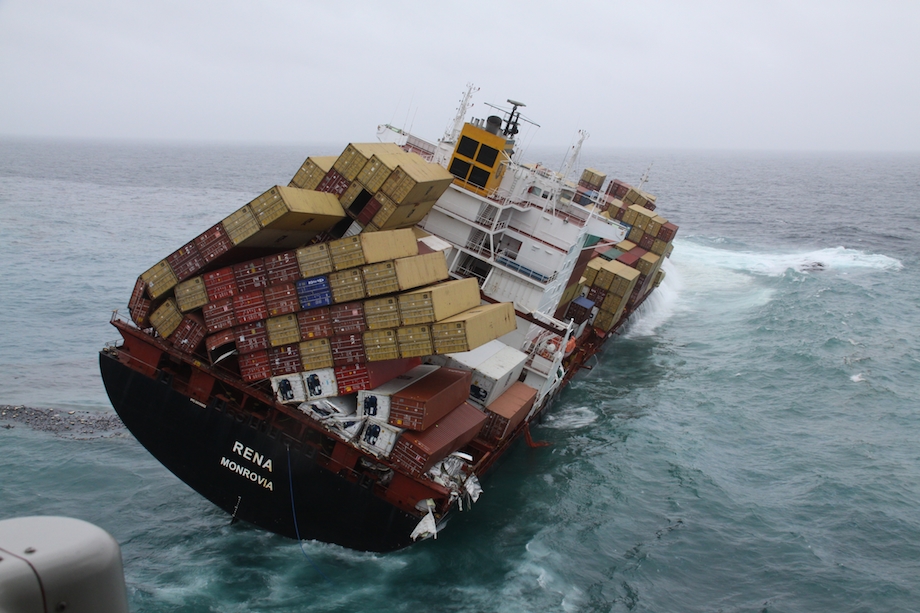
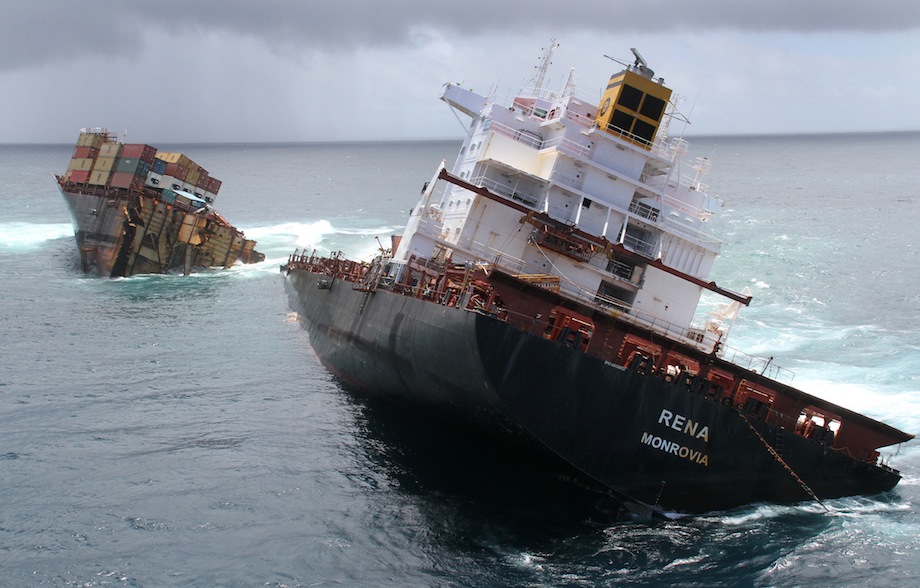
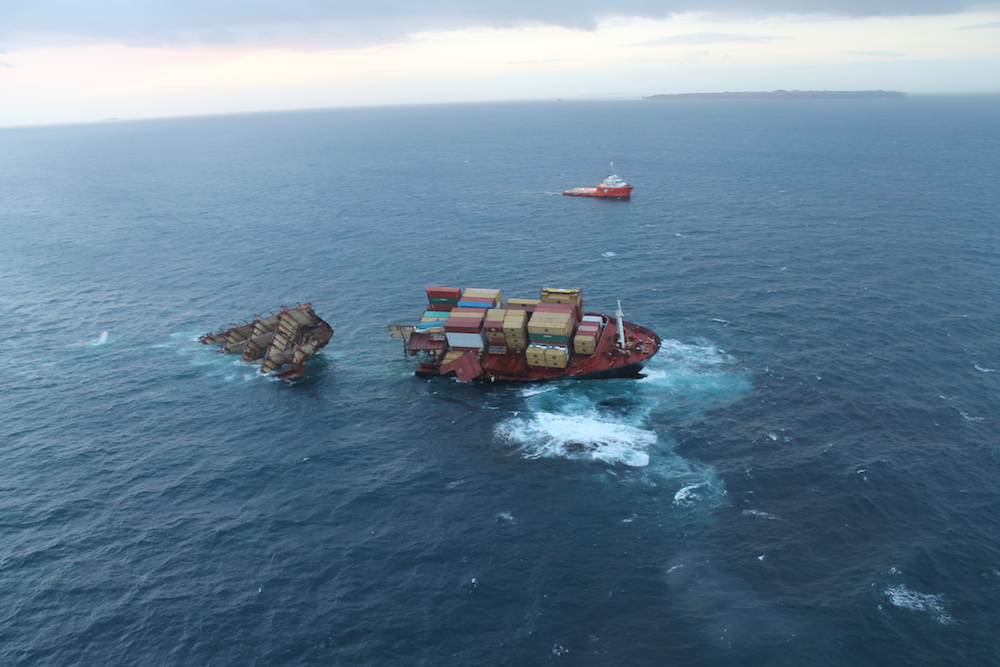
In the end, the incident resulted in the release of about 200 tonnes of heavy fuel oil and the loss of a substantial number of cargo containers, leading New Zealand’s Prime Minister to famously declare the wreck “the worst maritime disaster” in the country’s history. Although the bulk of the Rena wreck was removed during the complex salvage operation, parts of the Rena remain on the reef to this day after a judge ruled in 2016 the shipowner could abandon what remains of the wreckage.
In the aftermath of the incident, it was determined that Rena’s Second Officer had deviated from the intended course to Tauranga in order meet pilot boat deadline. The problem was the course change took the ship right over the charted reef, and nobody realized the mistake until it was too late. The Master and Second Officer were both arrested and sentenced to seven months in prison as for their role in the disaster.
MSC Flaminia – North Atlantic, 2013
The German-flagged containership MSC Flaminia was rocked by a series of explosions and a major fire in its cargo holds during a voyage across the North Atlantic in July 2012.
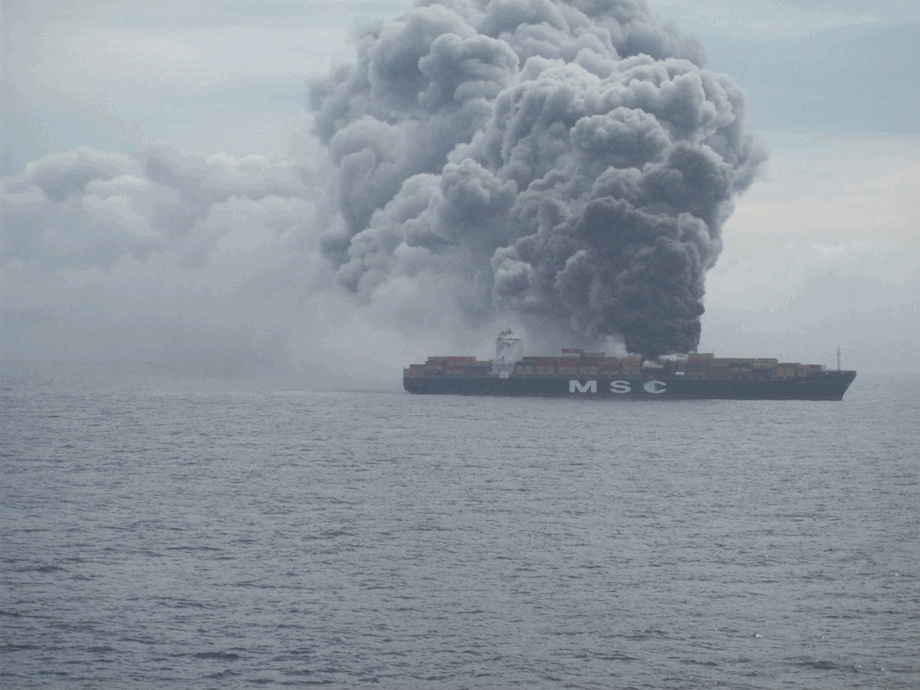
Tragically, MSC Flaminia fire is one of three fatal accidents on our list. The blast and fire resulted in the loss of four lives. The remaining crew members abandoned ship and were picked up by a good samaritan vessel.
The 300-meter ship burned for several weeks, sending toxic smoke into the air and causing severe damage to the vessel. Due to the environmental hazard, the ship was denied a place of refuge for months before Germany finally agreed to accept her into Wilhelmshaven nearly three months after the first explosion.

In the aftermath of the MSC Flaminia fire, the European Union ended up adopting new guidelines for ships in need of assistance. The vessel was eventually repaired and returned to service in 2014.
MOL Comfort – Indian Ocean, 2013

The loss of the MOL Comfort in June and July 2013 is by far the most spectacular loss on our list by nearly every measure. In fact, the loss of the MOL Comfort ranks as the single worst container shipping disaster in modern history.
On June 17, 2013, the 2008-built, Mitsui O.S.K. Lines ship developed a catastrophic hog and broke in two while underway in the Indian Ocean while carrying more than 4,000 containers.
All crew members on board abandoned ship safely, but both halves of the vessel of the stayed afloat as rescuers watched on. The stern section sank in spectacular fashion after about 10 days. Salvors were able to attach a tow line to the bow, but it too later caught fire and sank after several weeks.
It is estimated that 4,293 containers were lost in the event (equivalent to 7,041 TEUs).






An investigation into the sinking of the MOL Comfort found that the ship had suffered a hull girder fracture, but investigators were unable to determine the exact cause of initial fracture. Regardless, the incident led to the adoption of new rules concerning the hull girder strength of large container ships.
Maersk Honam – Arabian Sea, 2018
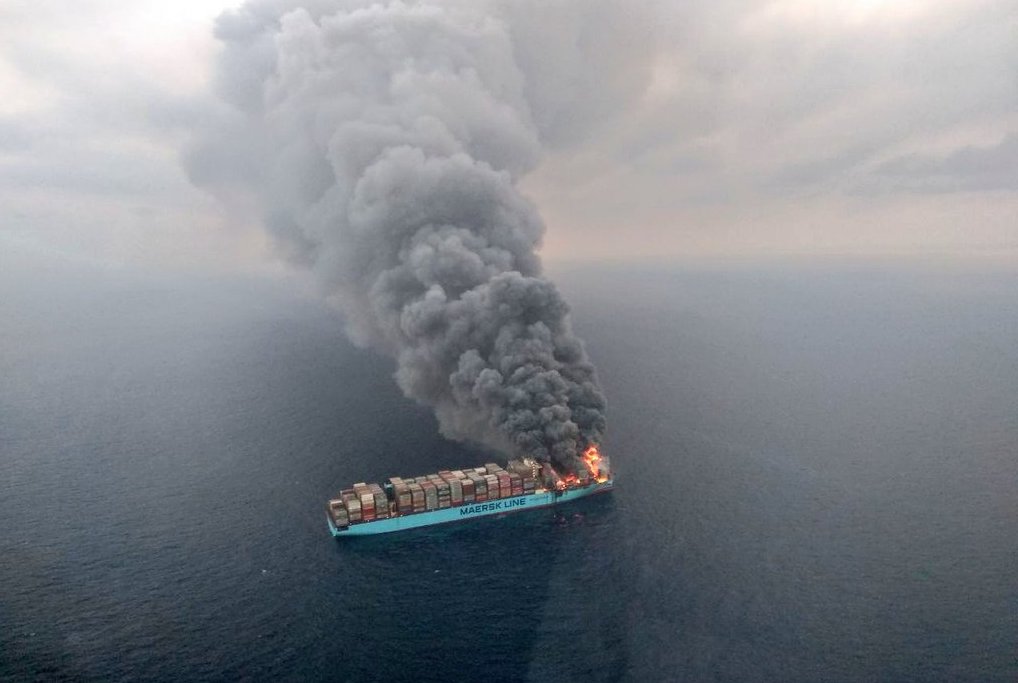
With a nominal capacity of 15,262 TEU (twenty-foot equivalent units), the 353-meter Maersk Honam is by the biggest ship on our list of modern container shipping disasters. In fact, it is the only one that is referred to as an Ultra Large Container Ship, or ULCS, which are among the largest vessels currently on the water.
The Maersk Honam is also one of youngest ships to make our list (with the Hanjin Pennsylvania), having just recently been delivered by South Korea’s Hyundai Heavy Industries in 2017.
The vessel, while loaded with a total of 7,860 containers (corresponding to 12,416 TEU), reported a serious fire in one of its cargo holds on Tuesday, March 6, while heading west in the Arabian Sea approximately 900 nautical southeast of Salalah, Oman. Of the 27 crew members on board, 23 were evacuated to nearby containership.
Tragically, five crew members has died as a result of the accident.

One week after the fire began, it has now burned through the entire cargo area from the bow to the superstructure. Although reports now suggest that flames have been contained on board the vessel, the fire at one point was so large that it could be seen from space.
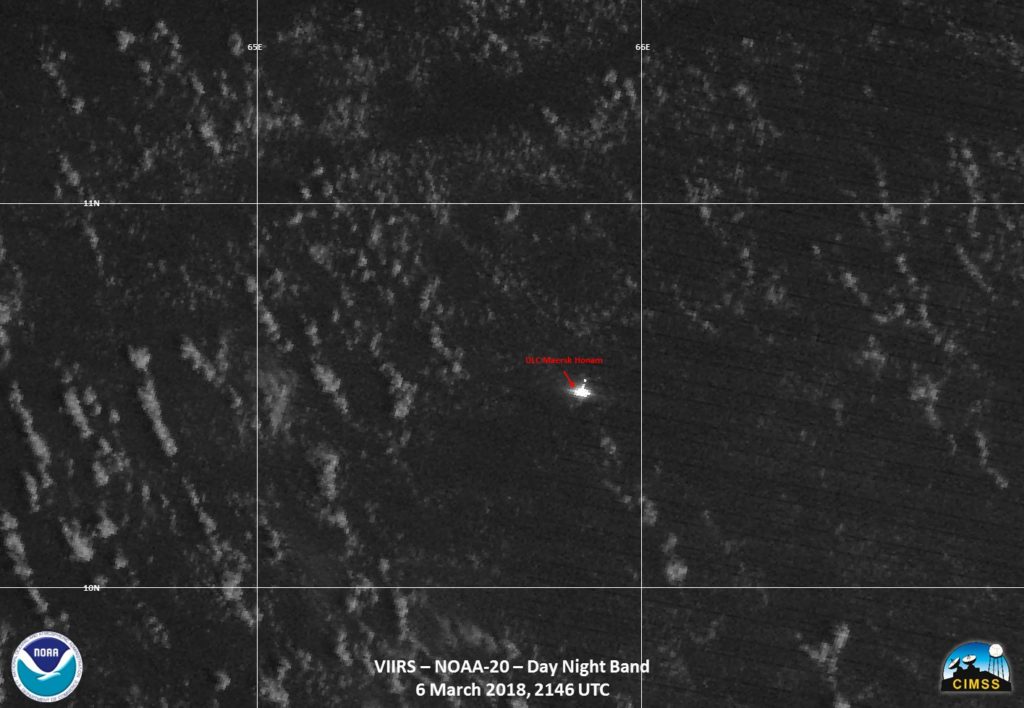
As it stands now, Maersk Line has confirmed that four crew have died and one remains missing.
The company says that a full investigation will be conducted to determine the cause of the fire.
Source: gcaptain